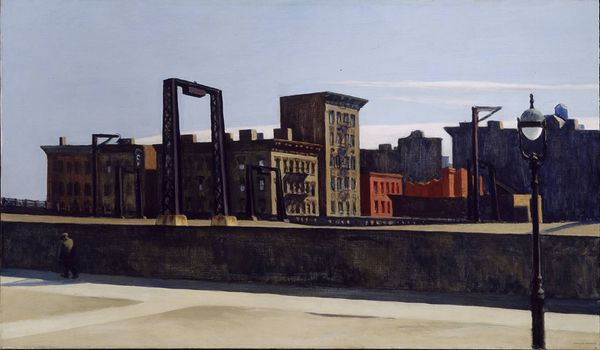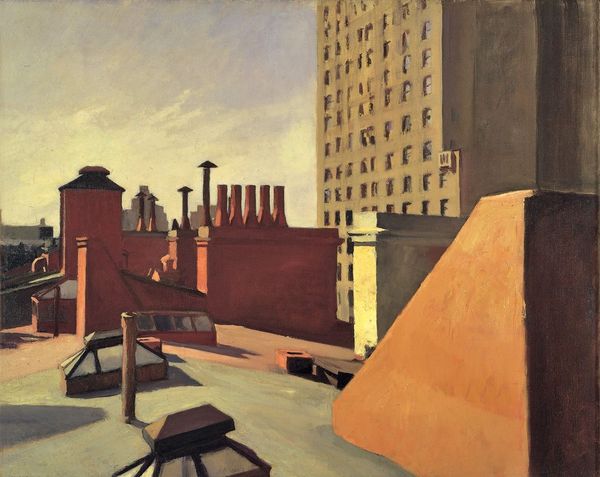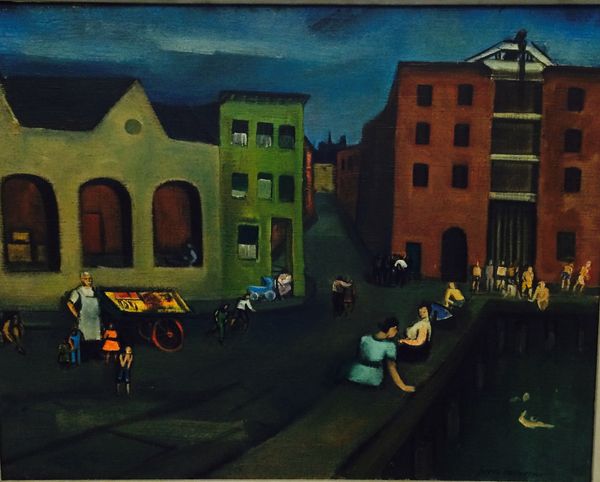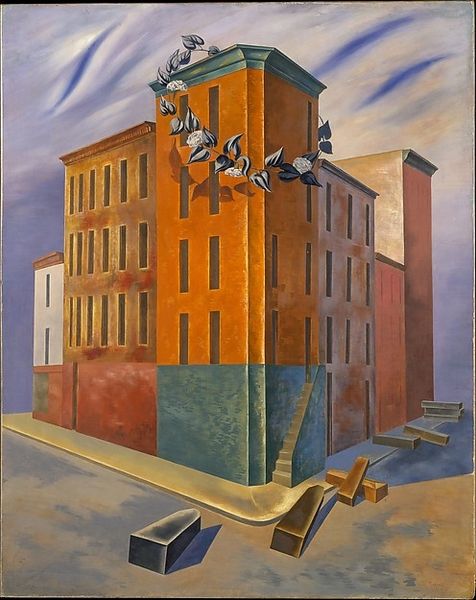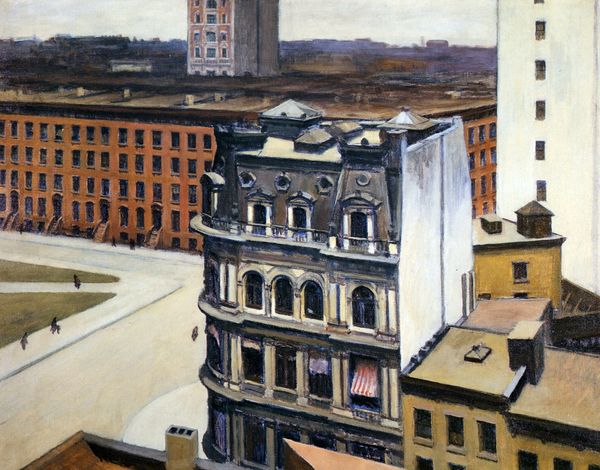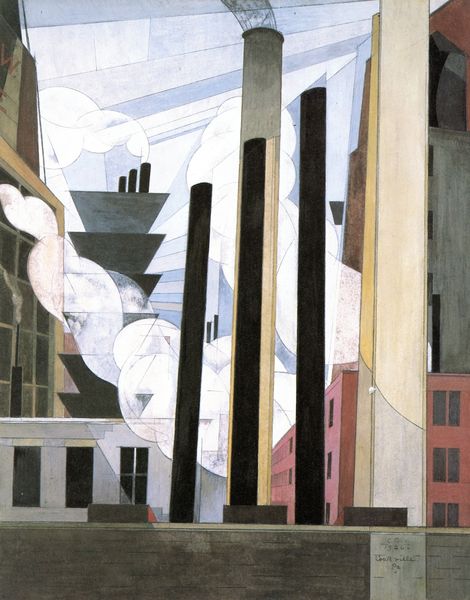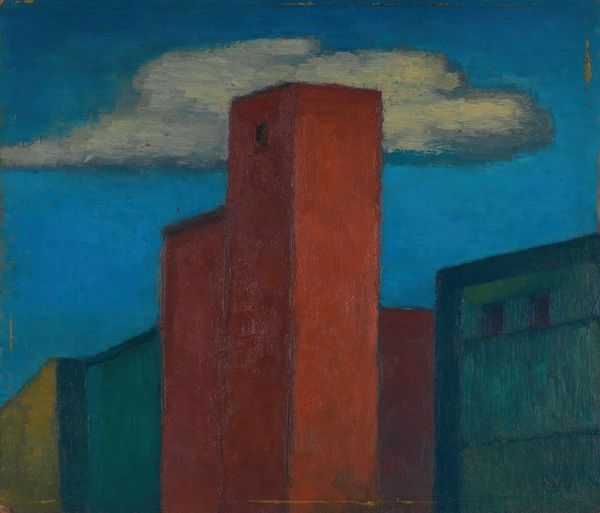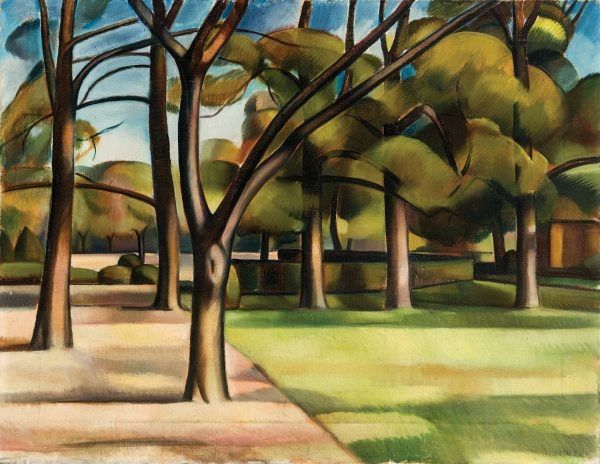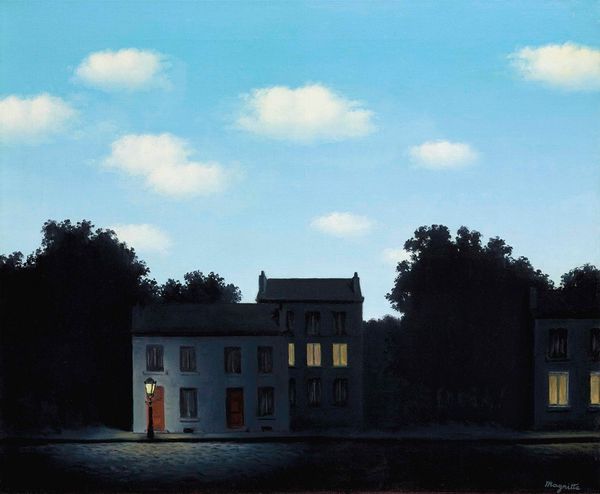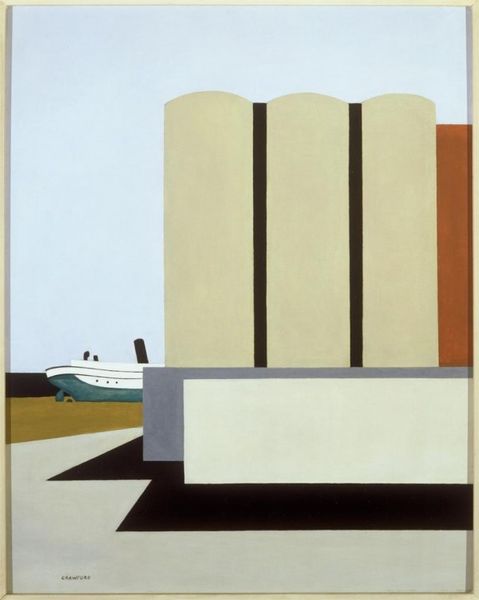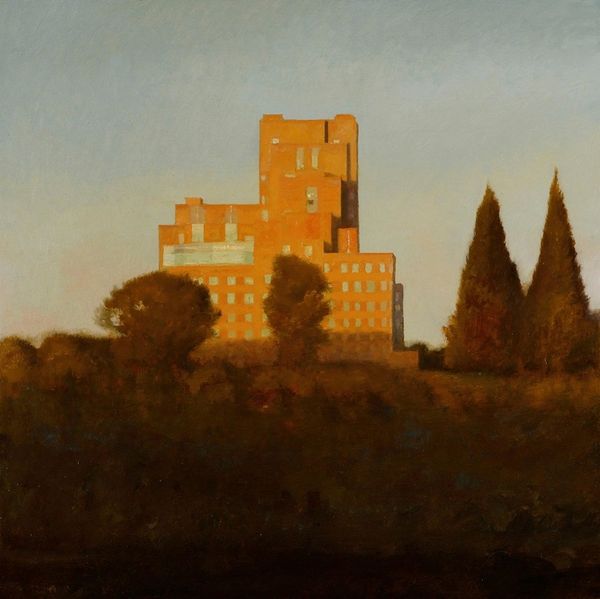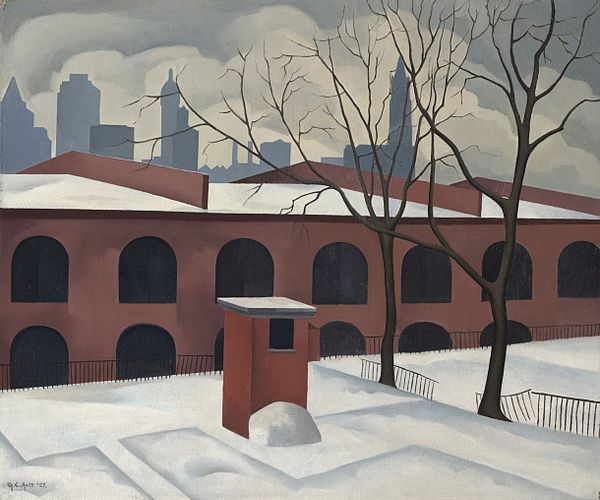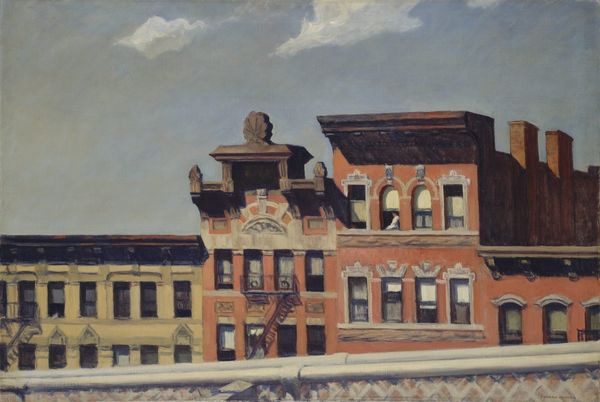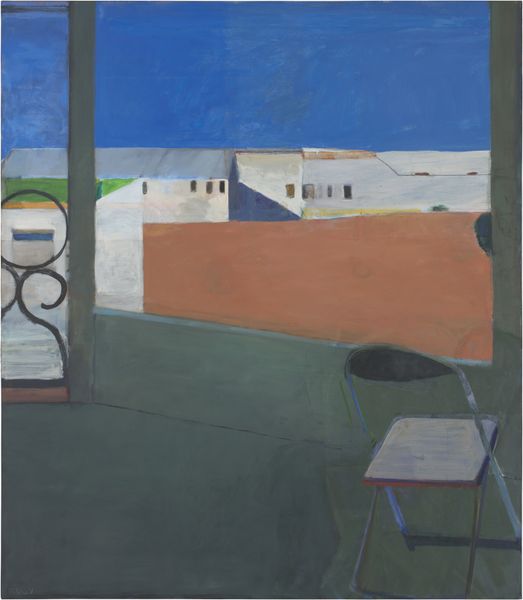
painting, oil-paint
#
precisionism
#
sky
#
photorealism
#
painting
#
oil-paint
#
landscape
#
house
#
oil painting
#
cityscape
#
modernism
#
realism
#
building
Copyright: Public domain
Editor: So, here we have George Ault's "Driveway. Newark" from 1931, done in oil on canvas. The stark buildings framing the scene create a sort of contained, almost lonely view. It makes me think about the social context of urban development. What strikes you about it? Curator: The materiality speaks volumes. Ault’s precise application of oil paint gives these buildings an almost manufactured quality, doesn't it? Think about the social context: the Depression era. Mass production was failing the working class. Are those buildings residences or factories, or both? Editor: I hadn’t considered that. The buildings certainly lack detail; the windows are just dark voids, which feels very intentional, further flattening and standardizing the built environment. Is he commenting on the industrial labor that went into erecting structures like these? Curator: Precisely. And it is also worth discussing the stark juxtaposition: a carefully constructed scene. The hand labor needed to render those flat planes would have been evident to audiences, emphasizing that what we see are in fact simulations of stability. The artist makes them accessible to an owner through an industrial process. But the artist used their hand. Interesting contrast. Editor: That tension is interesting. The blue sky peeking through does offer some reprieve though. Does this suggest something of a promise or hope? Curator: The sky and small green space are part of the work. Ault might be exploring the very conditions that allow that promise to appear within such an image produced and, made affordable, available to masses of people at risk of dispossession. Editor: It really re-contextualizes my first impression of loneliness; I see now the tensions between industrialization and the human need for the natural world. Thank you! Curator: My pleasure. Looking at art through the lens of materials and production often reveals these subtle narratives about labor, class, and even the commodification of hope itself.
Comments
No comments
Be the first to comment and join the conversation on the ultimate creative platform.
